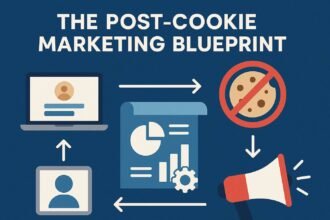Exploring the Essentials of First-Party Data
First-party data is information collected directly by businesses from their customers for a specified purpose, such as delivering products, customer service, or marketing. The importance of first-party data for businesses continues to increase. However, there are some challenges associated with collecting it—perhaps most notably, making customers aware of their personal data collection and ensuring they agree to it.
Within the realm of big data and analytics, first-party data provides superior customer insights. Equipped with these insights, companies can enhance both marketing effectiveness and serve customers more efficiently. Yet, despite the abundance of information, many companies struggle to leverage all these data and insights efficiently. They find it difficult to access, synthesize, and apply the data when and where it is needed—which has always been a challenge. As the most valuable yet often underutilized data source, first-party data stands out as a key differentiator capable of creating significant competitive advantage.
Exploring the Fundamental Principles of First-Party Data
First-party data comprises information that businesses collect directly from their customers or prospects. It can be aggregated in various forms, including CRM systems, website data, Facebook pixels, and AI systems. First-party data is the highest quality data type available to marketers and offers an enormous competitive advantage. Employing a structured approach to collection, analysis, and use maximizes its potential for personalization and the digitalization of marketing.
Understanding the essential role of user consent and privacy helps brands build transparency and trust, essential components for a high-quality and accurate database. Best practices provide guidance in these areas. Subsequently, managing the data collection process efficiently makes business data usable and enables the exploitation of marketing opportunities. Therefore, strategies and tools for unified data storage deserve close attention.
Advantages of Leveraging First-Party Data
First-party data—information a brand collects directly from its own audience through website forms, surveys, or social engagement—constitutes a key asset for any business. This data source offers the distinct advantage in that customers willingly offer their details. Unlike second- or third-party data, customers have given permission to receive communication from the brand. When harnessed effectively, first-party data serves as the foundation for a comprehensive picture of brand audiences across the customer lifecycle and provides a continuous supply of insights.
Well-managed first-party data enables deep understanding of customers, increased relevance of engagement, and the maintenance of competitive advantage. The business benefits of first-party data stem from its ability to deliver insights unattainable through other research methodologies. These advantages include superior, non-self-reported insights that provide greater visibility into the customer journey, increased conversion rates due to personalized communications, and enhanced communication with customers at every stage of the journey—before, during, and after conversion.
Challenges in Collecting First-Party Data
First-party data presents an invaluable competitive advantage. But it’s not without its hurdles. Without a strategy that anticipates these challenges, businesses will struggle to acquire—and effectively use—this data.
Chief restraints include limited public trust, an absence of user consent, disparate data sources, inadequate data quality, and gaps in the data collection process. Privacy concerns and regulatory compliance further complicate this landscape. Each pain point requires an approach tailored to address its unique nature.
The primary strategy for overcoming these challenges is rigorous attention to user consent and privacy. Additional factors that help businesses avoid common pitfalls include accurate performance tracking, efficient data flow, proper storage, seamless integration, rigorous analysis, targeted marketing, customer segmentation, mapping the user journey, client feedback, and following pertinent KPIs. These considerations are briefly examined at this stage to highlight their importance for a successful first-party data strategy.
Best Practices for Data Collection
Robust best practices in collecting first-party data ensure that the process maximizes data readiness. First and foremost, obtaining explicit user consent and maintaining rigorous privacy standards are fundamental to comply with ever-stricter regulations such as GDPR and CCPA, as well as to uphold ethical marketing principles. Without transparent data collection policies and clear user permissions, the quality and utility of acquired first-party data diminish substantially.
Besides securing consent and honoring privacy, data quality and accuracy are other crucial factors. Ensuring data completeness, consistency, and correctness reduces errors and inaccuracies during analysis, laying a foundation for subsequent processes of management, analysis, and utilization. High-quality first-party data translates into dependable analytical outputs, more meaningful customer segments for marketing campaigns, and safer storage solutions that mitigate unnecessary risks.
User Consent and Privacy
User consent and privacy are increasingly central to first-party data strategies for corporate success. Salesforce Research found that 55% of global consumers and 62% in the United States lose confidence in brands when they experience a data breach. Accenture research highlights that if a company’s data collection practices are intrusive or make consumers uncomfortable, 76% of customers may stop shopping there. Confirming consent is therefore a crucial first step in establishing a first-party data collection strategy. As Nick Hedges, Director of Product Marketing at RSA Security, observes: “Obtaining the necessary consents to collect and use data while being transparent about what data you hold, how it is used and for what purpose, and implementing appropriate data protection safeguards will be the critical enabler for brands seeking to extract value from their own first-party data.”
A Boston Consulting Group report also emphasizes that collected data must be scrubbed, standardized, and prioritized to ensure quality and accuracy. Users should be able to business-critical first-party data effectively; poor data management creates inefficiencies and risks alienating customers. To uphold privacy and maximize efficiency, the report advises investing in data management solutions that enable secure storage and fluid movement between departments, breaking down silos and connecting data.
Data Quality and Accuracy
Ensuring that First-Party Data is accurate and comprehensive requires attention to numerous factors, both during and after collection. While the curation of accurate data must begin at the point of collection, cleansing the data afterwards is equally critical for eliminating inaccuracies and conflicts. However, data cleansing does not guarantee accuracy; it merely rectifies identifiable problems. Data custodians must therefore adopt holistic procedures capable of validating and updating information to enhance its accuracy consistently.
Several practical recommendations can help maximize data accuracy and quality. Digital EchoData Solutions advises that organizations should collect only the data needed—excessive collection increases the risk of relying on inaccurate information—and strive to complete data sets using reliable external sources. Method Data advocates for clear staff guidelines to prevent the entry of incomplete or inaccurate personal data. The utilization of reliable third-party databases to enrich customer profiles further enhances data completeness. Finally, adhering to an established data-cleansing schedule ensures the maintenance of data quality and accuracy over time.
Data Management Strategies
Managing first-party data enables better marketing operations, guides real-time marketing strategies, and delivers improved customer experiences—with data stored in the right place and maintained properly. Surveys from 2022 report that many companies still grapple with managing first-party data effectively. In a Market Research Future survey of 298 global marketers, 63% cited difficulties in managing these data types. In another survey by Growth Intelligence, 60% of marketers expressed that first-party data was challenging to use because it was housed in isolated database silos.
By identifying every direct interaction that customers have with your brand, you can accumulate an enormous volume of valuable information. Establishing a centralized repository is essential to channel all data from every customer interaction. Methods for collecting these data segments vary by channel; some are fully automated, others require manual or semi-automated processes. Wherever possible, operational or third-party software responsible for capturing contact, profile, or behavioral data should be configured to automatically populate the central storage solution, preserving integrity of time and source. Direct integrations between data capture systems and the central repository are optimal, given their lower error rates compared to manual methods.
Data Storage Solutions
First-party data typically comprises online, e-mail and transactional data about your audience. While the data is valuable, some platforms get overloaded when the audience becomes too large or when the platform tries to connect outside datasets.
Because of this tendency, it is often more efficient to push the data elsewhere during the collection phase, to use the platform for what it is good for. In other words, use the right engine for each action. Keep in mind, whatever your chosen data structure, it must be designed so that data can move smoothly between the two solutions. This practice enables more efficient data management and leverages each system’s strengths.
Data Integration Techniques
Data silos represent a major obstacle to effective data management and can be avoided through the use of database table joins. Joining data generates a richer pool of information that supports superior decision-making. Businesses are discovering efficient techniques to integrate data so that it can indeed flow. Database joins represent an optimized method for data integration, enabling multiple datasets to function together and deliver higher business value.
Organizing datasets within a relational database provides an intuitive structure to artificial intelligence applications. Each table focuses on specific components of the business, separated by a structure that enhances digital workflows. Table joins act as bridges, connecting the information within each table and generating a consolidated, comprehensive view of the data. Finally, modern customer data platforms (CDPs) help orchestrate these tables across the relational database and your integrated business environment, making your first-party data work well with processes across the business.
Analyzing First-Party Data
Analyzing first-party data enables companies to extract valuable insights and inform decision-making. Businesses can utilize specialized analytical tools for customer profile generation, web and e-commerce analytics, customer experience management, customer journey mapping, social media listening, customer feedback analysis, customer sentiment evaluation, customer survey analysis, and customer segmentation. Key performance indicators (KPIs) are identified to assess the effectiveness of analysis methods.
Establishing clear objectives for first-party data analysis facilitates the mapping of appropriate tools, techniques, and KPIs. Many companies seek to understand their customers and business episode performance. They utilize first-party data analytics to answer questions such as Customer 360, Business Episode 360, Customer 360-X, Real-Time Loyalty Management, Customer/SKU Profitability, Marketing Campaign Performance, and Market Basket Analysis.
Data Analytics Tools
Quality first-party data provides rich insights about customer preferences, behaviors, needs, goals, and interests. Analytics applications can identify website navigation issues, find areas of frustration or disengagement, highlight document download gaps, and uncover transaction insecurities.
Inbound Marketing enables prospects to find the website through Search Engine Optimization, Social Media Marketing, and Customer Relationship Management (CRM) applications. Strategic outreach supports existing customers through the lifecycle phases of Awareness, Research, Decision, Retention, and Growth & Excellence. Carefully designed marketing programs include targeted calls to action that ask users to respond in several more well-designed ways.
Key Performance Indicators (KPIs)
are essential in measuring the impact of a first-party data strategy. By first establishing the business objective, businesses can identify suitable KPIs that align with that goal. These KPIs vary across sectors and departments. For example, the marketing department of an e-commerce company could focus on specific metrics to gauge the effectiveness of first-party data collected via its dating platform. In B2B sectors, a well-curated customer database fosters higher customer loyalty, productivity, and facilitates cross-selling and upselling strategies. The Ebiquity assessment highlights the inconsistent measurement of return on investment (ROI) from data, with only a minority of decision-makers expressing confidence in understanding the effectiveness of their data investments.
A range of KPIs exists for quantifying the benefits of leveraging first-party data successfully. These include increases in customer revenue, higher customer lifetime value, improved return on ad spend (ROAS), increased conversions, new qualified leads, enhanced customer acquisition performance, and a greater rate of repeat customers, among others. While the range of KPIs is extensive, businesses select relevant measures based on the strategic objectives of their first-party data initiatives. Establishing clear KPIs should be performed early in the project timeline to minimize operational distractions and free up resources systemically.
Using First-Party Data for Personalization
For an effective, strategic first-party data approach, using the data for personalization is critical. It enables targeted marketing and advertising, more efficient customer segmentation, the mapping of user journeys, and the implementation of customer feedback loops. By using first-party data for personalization, an organization can deliver a better customer experience, which supports higher customer acquisition, loyalty, and growth—all critical business imperatives.
To use first-party data for personalization one must understand how it can provide valuable customer insights and the challenges of collecting it. First-party data is collected and owned directly by an organization from sources such as website analytics, CRM systems, account registrations, transaction history, surveys, and mobile applications. These data typically relate to a company’s customers or users, and considering that data is usually collected with the user’s consent, the user profile information tends to be accurate. Allowing users to play an active role in the collection of first-party data highlights privacy concerns and can help ensure high levels of data quality.
Targeted Marketing Campaigns
are a powerful way of utilising first-party data. An advertising campaign can be optimised so that it reaches a certain group of consumers that are more likely to be interested in the promoted product or service. A low-cost option could be to act with a niche scale and attract users that are more likely to be interested. This approach prevents work and money that could be wasted advertising to individuals that are not the target and thus are less likely to make a purchase.
By building a database or a library of registered users or customers, it is possible not only to track but also to predict behaviour. Looking for correlations between buying habits or product preferences can unveil hidden business potential. For example, when the ticket monitoring system of a bus company identifies two areas with many daily users, it could suggest to these users a promotional campaign that uses both routes. A better customer experience is provided, achieving greater loyalty and greater possibilities of obtaining a purchase. More advanced alterations to the journey could be made by adopting techniques such as user journey mapping and feedback loops.
Customer Segmentation Techniques
Segmenting customers into groups based on shared characteristics allows marketers to target more specific customer groups and deliver tailored messaging. Customer segments are typically selected by evaluating the fairness or inefficiency of a market allocation in economics or routes to increasing profits in marketing. Grouping the data enables practitioners to outline expected revenues and costs and product needs for the groups, allowing for increased operations efficiency, matching of product features to customers’ income and tastes, and improved targeting efforts.
Behavior-based segmentation looks at patterns in consumer behavior over time. Behavior-based data collection can reveal how frequently a customer buys, how much they spend, and in what location. Grouping individuals based on similar interactions with the company makes it easier to achieve specific brand behaviors in actions such as conversion, loyalty, and advocacy. Geographic customer segmentation is an approach that considers the location of the customer and how each of the customer interactions can be influenced by location.
Enhancing Customer Experience with First-Party Data
Creating tangible value from first-party data (FPD) depends on how astutely marketers utilize that data. Serving in a strategic role, business teams analyze insights and craft personalization strategies tailored to business priorities and specific markets to support sales and marketing. Marketing teams then execute the tactics, employing FPD to enhance targeting, deepen segmentation, and elevate customer experiences through customer-journey mapping and customer-feedback loops.
The intrinsic value of FPD is underscored by its exclusivity to the collecting organization—akin to a location advantage in economics. Organizations that invest in collecting, managing, enriching, protecting, analyzing, and safeguarding their first-party data generally enjoy enhanced performance and increased resilience.
User Journey Mapping
Tracking the user journey not only reveals purchasing behavior but also creates avenues for deeper engagement. It promotes additional adoption, upselling, and cross-selling while solidifying brand loyalty. Profiling customer preferences allows for enriched personalization within standard and welcome communications. By evaluating deeper engagement in terms of position within the user journey, companies can deliver enhanced content via newsletters, as well as through SMS and push message campaigns.
Effective user journey mapping involves a continuous feedback loop of customer interactions. As the company sends messages based on user preferences, the response data is utilized to further personalize journeys that enhance brand connections. The objective is to maintain customer interest and engagement, ensuring continual usage and interaction with the corporation’s product or service.
Feedback Loops and Continuous Improvement
One effective method of gathering first-party data is through feedback loops that maximize customer value while remaining unobtrusive and convenient. Despite common misconceptions, pursuing greater customer satisfaction is perfectly valid even for businesses primarily engaged in sales transactions. Realizing that feedback loops can generate valuable first-party data that guides personalization, elevates customer experience, and makes customers feel seen, heard, cared for, and valued represents a form of strategic investment. As more first-party data is gathered via feedback loops, the data consequently drives product and marketing improvements, thereby attracting more customers. Consequently, careful collection of first-party data can initiate a virtuous cycle: collecting more data leads to offering greater customer value, which in turn generates additional data.
Businesses can also construct limited feedback loops designed to yield only direct insights and corresponding improvements, devoting their resources to building a larger feedback loop dedicated to enhancing the customer experience. Such loops can be evaluated across four dimensions: frequency, detail (amount asked each time), fan base (percentage of customers whose value is increased through the loop), and the breadth of value enhancements. Insight into the breadth of adjustments enabled by feedback-limited loops naturally overlaps with that for fan base. An ideal feedback loop maximizes all of these dimensions—frequency, detail, fan base, and aesthetic—thereby leveraging first-party data to its fullest.
Legal and Ethical Considerations
Respecting user consent and privacy is imperative to any first-party data strategy. Privacy laws and data regulations serve as the boundary conditions. European GDPR, the California Consumer Privacy Act, and other similar legislation require explicit confirmation of user consent before adding an individual’s identifiable information to a database. Concealing personal data inside encrypted cookies or those that capture vague browsing habits does not allow exporting or importing this data across multiple destinations.
In addition to protecting the individual’s right to use and save data, these measures safeguard wholesalers and resellers from accidentally mishandling the personal information of clients. Even inadvertent language in contracts around data ownership and licensing can translate into fines and penalties. Conversely, many enterprise businesses consider demographic information a critical asset, enabling them to offer more tailored content, delivery, and products that correspond with clients’ specific profiles and interests.
Compliance with Data Regulations
Data privacy and security have become paramount concerns for individuals, and the legislative and regulatory bodies acting in their interests have responded with laws and regulations designed to protect consumers. Two key areas include the European Union’s General Data Protection Regulation (GDPR), which applies to all companies offering goods or services to people in the EU, regardless of the business’s location; and the California Consumer Privacy Act (CCPA), which protects residents of California. Similar legislation and regulations have been introduced in other jurisdictions, some drawing heavily on these examples. These regulations grant consumers extensive control over their personal data and impose stringent control requirements on companies processing that data.
Of particular importance to companies that rely on first-party data for their business is the definition of “personal data” and whether it includes device identifiers, such as cookies. Google’s plan to phase out support for third-party cookies in Chrome has created some uncertainty regarding the use of identifiers for targeting and personalization. While Google has indicated that supporting these use cases is a high priority, ongoing discussions continue with regulators and other stakeholders before implementation. Regardless, legal compliance is just one aspect of a successful first-party data strategy; equally important are business, operational, and technical strategy and execution.
Ethical Data Usage Principles
In the context of first-party data, ethical data use calls for companies not only to abide by the law but also to uphold deep respect for persons and human dignity when formulating and fromulating their data strategy. It requires vigilance over the data collected and how it is used over time, incorporating checks and balances designed to minimize any risk of adverse effects on individuals, groups of people, or society at large.
Ethical data use means that companies engage with their customers and users in ways that are open and honest. It means obtaining their free, informed, and explicit consent for data collection, while allowing for easy withdrawal at any time. It means providing clear, accessible information about the purposes for which data is collected and used. It also entails ensuring that data is collected, used, and shared in ways that align with those expressed purposes, and refraining from exploiting excessively sensitive information for marketing or advertising purposes.
Future Trends in First-Party Data
Following developments in adtech, the future of first-party data lies at the crossroads of emerging technologies and evolving consumer behavior. First-party data is at the heart of every personalization strategy—and every privacy move. When collected, processed, and used ethically and with consent, it continues to be a valuable asset that offers a detailed, direct connection to actual customers, prospects, and users.
Original, first-hand data has always conferred strategic advantage. But privacy regulations such as the GDPR and CCPA as well as phasing out of third-party cookies changed consumer expectations and shifted the focus of first-party data strategies. Now, marketing efforts must balance privacy with use of the data for optimization purposes. First-party data strategy is a major point of discussion during industry events including IBM Think, Dreamforce, and DMEXCO. Use cases for first-party data are expanding beyond marketing with categories like sales, e-commerce, artificial intelligence, retail strategy, and loyalty also benefiting from the use of rich, reliable information collected from customers and users.
Technological Advancements
Rapid advancements in artificial intelligence and machine learning have made it easier to extract insights from first-party data. AI-powered platforms identify valuable patterns and trends—such as customer segmentations or high-value prospects—and surface actionable recommendations.
Modern platform architectures allow combined analysis of first-party and third-party data, increasing flexibility while maintaining privacy safeguards. The GiANT digital-ecosystem is an example of such a platform, integrating various business ecosystem partners for comprehensive insight.
Shifts in Consumer Behavior
Recent changes in consumer behavior have accelerated the move toward collecting, managing, using, protecting, and monetizing first-party data. As consumers shift away from third-party sources, their increasing reliance on first-party data encourages marketers to make it their primary source for personalization. These behavioral changes, fueled by greater awareness of data privacy and protection, emphasize the critical importance of compliance with data privacy laws and protection regulations. Supply chain issues affecting the advertising ecosystem and Google’s plan to phase out third-party cookies by 2024 are contributing factors in this transformation.
Most marketers view first-party data as a strategic asset that offers great value to their businesses. When properly collected, analyzed, and utilized, first-party data can generate a competitive advantage. However, organizations face many challenges in handling first-party data. Overcoming these difficulties requires gathering it in a user-consented and privacy-compliant manner and ensuring that the data is accurate and of high quality. Proper storage is essential, and marketers must enable a seamless flow of information to facilitate its engaging use.
Case Studies of Successful First-Party Data Strategies
Many companies can identify where and how customers find, use, and advocate for their product or service. The greater challenge is determining those actions’ associated value—the contribution of each customer to profit—and then capitalizing on that knowledge. By linking transactional data from the payment or register system (“who”) to digital tracking data (“what,” “when,” and “how”), as well as to mobile app and contact-center data, companies can better understand the interplay between current and potential shareholders.
When tackled strategically, the potential payoff of first-party data is appreciable. By unifying the “what, where, when — buying, opening, clicking, watching, responding, engaging, advocating, and rating” actions with the “why” — psychographic and demographic profiles and additional data voluntarily submitted by customers — leaders can extract further insights. These insights allow them to forecast consumers’ next stops on the consumer journey and redirect them to higher-value, long-term routes. This consolidation offers a distinctive crop of highlights that delivers visibility across a customer’s full journey, aiding leadership of consumer brands throughout the process. Understanding your customers’ entire journey and how their experiences affect their lifetime value is your best strategy for first-party data.
Measuring the Impact of First-Party Data
Your Best Strategy for First-Party Data
Every business wants to leverage first-party data. However, the question that needs to be answered in all marketing activities is What’s in it for my company? Can it generate any revenues or reduce costs? What is the return on investment? First-party data encompass all data collected directly from the interactions your company has with customers in the offline or online world. Examples are transactional and contact data from a loyalty program, customer contact information, purchases made through your webshop and CRM information. In addition, the use of first-party data is of strategic importance. First-party data are the lifeblood of any organization. An important starting point is understanding the advantages of first-party data.
Strategic Advantage with First-Party Data
First-party data enable companies to gain new insights and understandings, even up-to-date information on how potential customers have bought previous products or services. This helps establish long-term positive relationships with the clients that exist, so that they keep coming back for more. First-party data provide the ability to understand in great detail new groups of audiences and to execute campaigns to win them over. It is the most comprehensive and flexible source of revenue, since it can be used for both prospecting (new customers) and remarketing activities.
ROI Analysis
The value of first-party data goes far beyond customer acquisitions and ad targeting. Beyond measuring ROI in terms of money spent on digital marketing knockouts, invest more time evaluating first-party data’s long-term value. For example, Amazon could do ROI analysis based on increasing sales volume, then reduce their averge cost per sale as part of their long-term growth model. It’s like asking yourself, “If I invest 3X, am I creating 5X more customer value, then locking in that value through brand loyalty?”
Business leaders continue looking for new ways to analyze the effectiveness of their first-party data strategy. Data-driven decision making requires a fairly high level of analytical expertise that may seem an unrealistic expectation. Roles such as Chief Data Officer (CDO) and Chief Analytics Officer (CAO) are designed to fill that need, combining managerial workflows, business leaders’ strategic goals and analytics-driven marketing strategies to leverage customer data. And it’s a team effort. The role of CDO, for example, is dovetailed rather than supplanted by the broader executive management team. Organizations assign the CDO role to a seasoned digital marketing expert familiar with customer-creativity, customer-acquisition, customer-experience and customer-retention strategies. Then the CDO works with staff-developers who specialize in coding and programming.
Long-term Value Assessment
First-party data is the information collected directly from an organization’s customers or audience by a digital channel. Examples include a company’s newsletter database, its app and website analytics, records of past transactions, or data collected at the point of sale. First-party data provides the clearest insight into a customer’s preferences and behavior. It helps companies gain a competitive advantage by investing time and resources in collecting and managing such data now. First-party data is critical to marketing because it enables personalization.
Measuring the long-term value of first-party data can be complex, but a better understanding of return on investment (ROI) can help inform marketing strategy. A first-party data strategy must include mechanisms for evaluating the impact of first-party data investments. Incrementality testing—a controlled experiment measuring conversion rates at various touchpoints—can provide immediate insight. Calculating media incrementality isolates the impact of an advertising campaign, while audience incrementality identifies the segments that perform best. This information helps optimize media budgets and improve campaign CPMs. In the long term, first-party data enables differentiation, resilience, and personalization, all of which help grow brand preference and drive repeat purchases. Even without long-term ROI direct metrics, considerations such as channel performance and target audience value are vital.
Conclusion
First-party data comes directly from an organization’s audience and customers, making it the most accurate and actionable view into customer needs and behaviors. In an era of increased privacy regulations and lover-performing third-party data, organizations must lean on their own first-party data to build and strengthen effective customer experiences. Used correctly, first-party data is a powerful way to better understand who your customers are and how to effectively reach them. When collected and segmented effectively, it can improve brand interactions at every step throughout the customer journey—from digital advertising to personalized recommendations and minimizing churn.
First-party data is defined as any information your users intentionally provide during interactions with your organization and brand. It is often collected via surveys and online forms, transactional information, website and app activity, and any other direct interaction between your brand and a user. First-party data uses span across numerous organizational functions. For marketing, it includes targeted digital advertising and campaign tracking via conversion and attribution data; data analytics uses it to build customer journey maps and measure content or paid media performance; the customer experience team relies on it for both customer segmentation and personalization; product management uses it to gather direct customer feedback; and for sales and customer service, it provides insight into demographic or behavioral information, as well as the details of any interaction with your brand.












